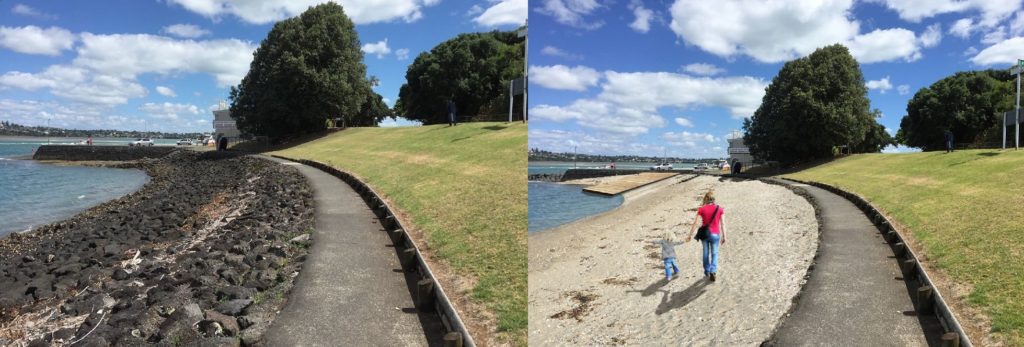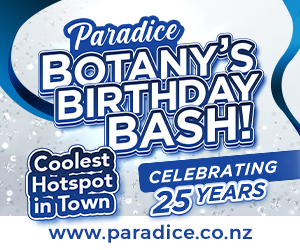
Olympic gold medalist Bruce Kendall recalls walking along the beach in the 70s from his Bucklands Beach home to the Old Bucklands Beach yacht club at Grangers Point.
He knows the immense value of the beaches that attract people from all over Auckland during summer – not to mention the value of the waters around Bucklands Beach that have produced more Olympic sailing medals and round-the-world yacht racing champions than anywhere else in New Zealand.
But fast-forward to 2017, and the white shelly sand on the northern half of Little Bucklands Beach is gone, creating a potentially dangerous shoreline.
Black rocks washed out from the road and sea wall permeate the landscape, along with an oyster barrier between the water and land making it impossible to walk on the beach or access the water – not to mention the hazardous nature of waves crashing across the road in the presence of strong winds at high tide.
“If you can consider a beach a park, it’s a premier park that’s being ignored,” said former Howick Local Board member Steve Udy, who is working in partnership with Mr Kendall to provide a solution-based approach to the dilemma.
In a recent presentation to the Howick Local Board made on behalf of the Eastern and Bucklands Beach Residents and Ratepayers Association, the pair proposed significant changes to the landscape – including a sea wall resolution, a beach restoration programme and the upgrade of Grangers Point facilities.
They’ve got a vision for this to happen in stages, starting with the northern half of Little Bucklands Beach, followed by Grangers Point and the restoration of Big Bucklands Beach, which has also deteriorated over time.
It’s a problem that dates back to the 1950s, when The Parade bordering Little and Big Bucklands Beaches was widened from a one-lane dirt road to a two-way thoroughfare, pushing land onto the beach and causing a bank instead of the shallow gradient, shelly sand beach.
The assault and backwash from the waves hitting a steeper coastline eroded the bank away, threatened the road and created the need for a sea wall.
It’s now slumping, cracking and not properly protecting the road, said Mr Kendall.
“The road at the northern end of at Little Bucklands Beach is going to collapse again – that’s guaranteed,” said Mr Kendall.
“We’re asking Auckland Transport to stop making short-term fixes that further ruin the beach and fix it once and properly with a bevelled loose stone wall, giving foundations for a foot path, and then cover the rocks with sand and shells [as per the concept drawing].”
Once restored, it will have the recreational potential to attract water sports clubs and events, offering significant public amenity value that will extend to Howick as a whole, said Mr Udy.
They are planning on making the project available to view online so the public can view historical photos, track progress, read about the proposed plans and make suggestions, followed by a public meeting mid-July when decisions will be made regarding the plan of action.
Mr Kendall, who has spoken with local iwi, residents and organizations in favour of the proposed restoration effort, said collaboration is the best way forward.
“It will be really good if it’s a partnership with Howick and Auckland Council, AT, local businesses, residents and iwi, plus any experts that are able to help. That’s what we’re looking for.”
They are hoping a pragmatic co-operation will lead to a successful outcome that will benefit generations to come.
- A meeting will be held on July 11, 7:30pm at the Bucklands Beach War Memorial Hall.








